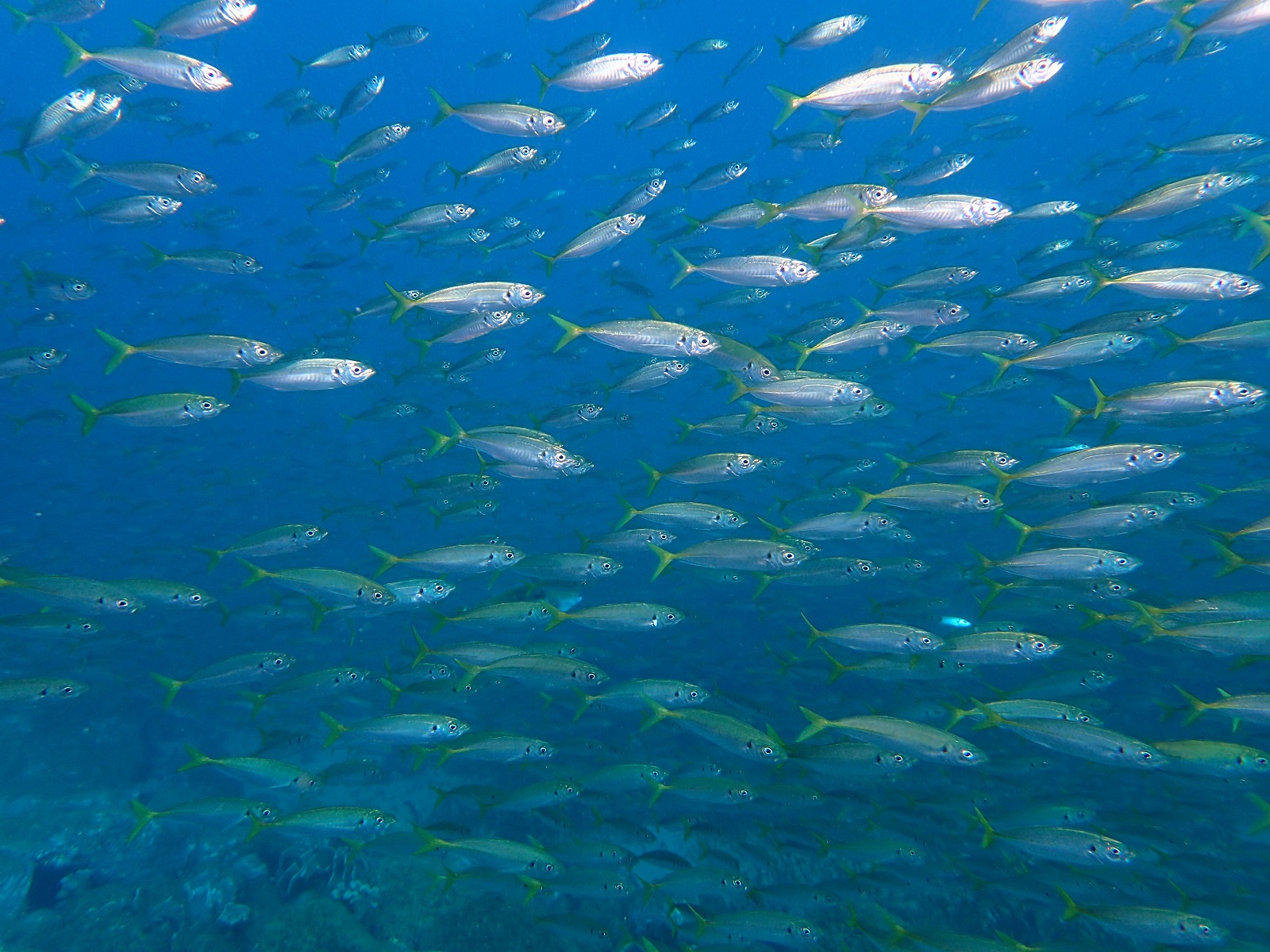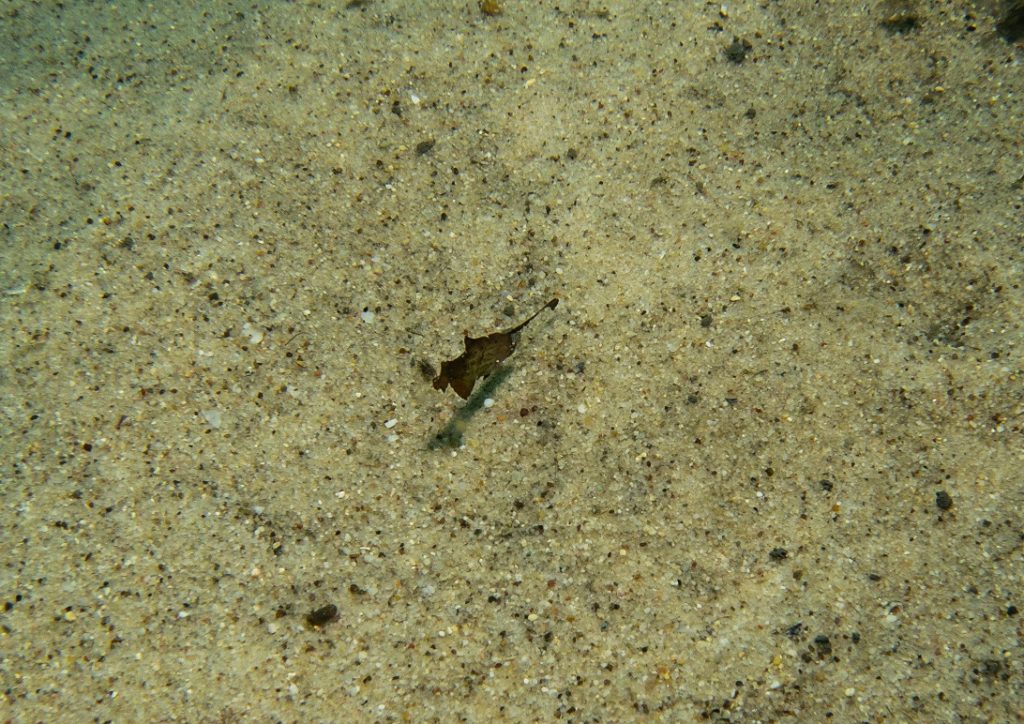On Thursday the 9th of May a team of dedicated survey divers converged at the 2019 Port Stephens RLS base a short walk from the picturesque promenade in Shoal Bay. Although the weather forecast didn’t allude to favourable conditions, the mood was still very much positive and bolstered by the opportunity to establish new connections. A lovely dinner was prepared by Kate Tinson and a cooked chook was stripped and thrown in to the mix by Josh Moloney. The plan for Friday was laid out by Tom and Nicola Davis and Margo Smith which gave rise to some good discussion about what to expect for those new to the area.
Note: On the preceding weekend 2 Transects had been completed at Little Beach West!
On Friday morning we all met at Feet First Dive to assemble our gear which would be transferred to the boat by the amazing and helpful staff there led by Trudy and her partner.
We suited up at Little Beach and killed some time with a photo and getting organised as we took in the views there. The wind was already picking up at that stage but wasn’t going to deter us. We boarded the dive boat at Little Beach Jetty and headed out to Cabbage Tree Island where we jumped in at Coral Gardens and Cabbage Tree Island West for about an hour. The school of Yellow-tail Scad (Trachurus novaezelandiae) that one of our transects passed through seemed to be never ending. Slimy Mackerel (Scomber australasicus) were mixed in too, just to try and confuse things. Meanwhile a few of the team surveyed Boat Harbour South which involved training for prospective RLSers Becky and Matt under the guidance of Margo. Back on the boat after being scooped up, we were souped up and caffeinated. Biscuits were provided which helped to stoke the auld boiler for the next dive which was over at Government Wharf on the north side of Fingal Island for the final boat dive.
Government Wharf was the most biodiverse site according to this years survey with 83 separate species recorded including some cool critters like Trapezia spp. Coral Crabs observed protecting the gorgeous browny-green Corals Pocillopora damicornis and White-speckled Moray (Gymnothorax eurostus) which I had never seen in the flesh until now. Tom Davis recorded a Calf Cowry (Lyncina vitellus) which he has to show me next year, okay Tom? Some impressive big Samsonfish (Seriola hippos) were spotted hunting the reef around the wharf. In all my diving I haven’t seen too many but whenever I do, I always take a moment to marvel at them.
At around the same time, the rest of our team were getting in at Halifax Park for one of three transects! We waved at them as we cruised past on our way back to Little Beach Jetty as they were exiting. They didn’t wave back right away and we found out that they had recently waved at another random dive boat which we all found funny. Four from the boat jumped in at Halifax Park to complete the remaining two transects. Chris recorded Drapers Egg Cowrys (Cuspivolva draperi) with his well-tuned eyes. You must point them out to me next year mate! I saw my first Sawtooth Pipefish (Maroubra perserrata) thanks to Tom who found it on Method 2. Also seen at Halifax Park on Method 0 by Ash was a cool-as Leaf Wrasse (Iniistius dea) formerly known as Xyrichthys dea. Keen eyes all around I reckon.

On the Saturday we all shore dived at various sheltered sites as the weather deteriorated. Determined and with our spirits undiminished we entered the water at Fingal Bay for two transects which included some training under Tom’s guidance this time. There were quite a few curious Whiteleggs Weedfish (Heteroclinus whiteleggii) and some Rosy Weedfish (Heteroclinus roseus) to be found tucked in around all the cobbles and boulders that hug the point. They’re always a joy to see.
A couple of us went to Little Beach West where a cute little Orange-line Wrasse (Halichoeres hartzfeldii) was seen as well as a couple of colourful Mexichromis festiva nudibranchs. Meanwhile the rest of the team went to finish Boat Harbour sites watching the white caps outside the bay as we geared up. It’s nice to know there are good dive options in Port Stephens even when the weather takes a turn. Eastern Rock Lobster (Sagmariasus verreauxiwas) spotted taking shelter in a hard to reach spot. A few Pygmy Leatherjackets (Brachaluteres jacksonianus) that always seem to know (from my experience) when a camera is being pointed at them were observed trying to blend in with the nearest bit of macroalgae.
On Sunday the diving was limited to fewer sites with Fly Point and Pipeline being the best fit! There was plenty to see at both sites with Fly Point in particular being joint second in terms of biodiversity out of this years’ 10 survey sites. Tom Davis had the highest species count, recording 61 species on one side of a transect. Margo recorded the only Rhino Filefishes (Pseudalutarius nasicornis) over the entire survey and Nicola Davis recorded a few Southern Passion Stars (Ptilometra australis) both of which I’ve never seen or heard of before. One thing I’ve seen pictures of is Snake Eel (Apterichtus flavicaudus) but hadn’t seen one in the flesh until Kate Tinson pointed one out to me that she recorded on our transect at Pipeline, what a treat! I would then ‘break my ‘camera flooding’ duck’ on the way out which was annoying but managed to salvage all the photos so it wasn’t too bad.
There was an obvious correlation (in the shape of a big X) between the number of transects completed and the deteriorating weather conditions. Although it was out of our control I think we all did our best and had some fun which is what matters!
The final evening of the trip we all had local fish and chips for dinner which was lovely and washed it down with a few bevies to celebrate completing the 11th Port Stephens RLS.

8 Divers
23 Surveys
10 Sites
23 Transects
1,464 Lines of Data
191 Species
44,367 Individuals
No surprises in first place is Yellow-tail Scad (Trachurus novaezelandiae) with 26,236 individuals dwarfing second place Slimy Mackerel (Scomber australasicus) at 1,395 by just under 19,000 permille. In third place was Eastern Pomfret (Schuettea scalaripinnis) at 1,085 individuals.
Long-spine Urchin (Centrostephanus rodgersii) in first place at 2,379 was found to be almost exactly twice as abundant as second place Tent Shell (Astralium tentoriiforme) with 1,191 individuals. In third place was the Turban Shell (Turbo torquatus) at 390 individuals.
Site Name |
Individual Species Recorded |
| Government Wharf | 83 |
| Fly Point* | 75 |
| Cabbage Tree Island West** | 75 |
| Halifax Park* | 62 |
| Coral Gardens** | 60 |
| Pipeline | 59 |
| Little Beach West* | 58 |
| Boat Harbour North | 49 |
| Fingal Bay Point | 41 |
| Boat Harbour South | 38 |
* Sanctuary Zone (SZ)
**Special Purpose Zone (SPZ; Lure Fishing for Baitfish Only)
A list of some of the individuals recorded just once over the entire Port Stephens Survey:
Thank you to everyone who pitched in for this years Port Stephens Reef Life Survey: Margo and Ash Smith, Nicola and Tom Davis, Kate Tinson, Kris O’Keeff, Chris Westley, Josh Moloney and last but not least Prospective RLSers Matt and Becky.
Thanks to Feet First Dive for taking us out to Cabbage Tree Island and Government Wharf at Fingal Island and providing the soup, snacks and laughs.
Hope to see you all again next year!









